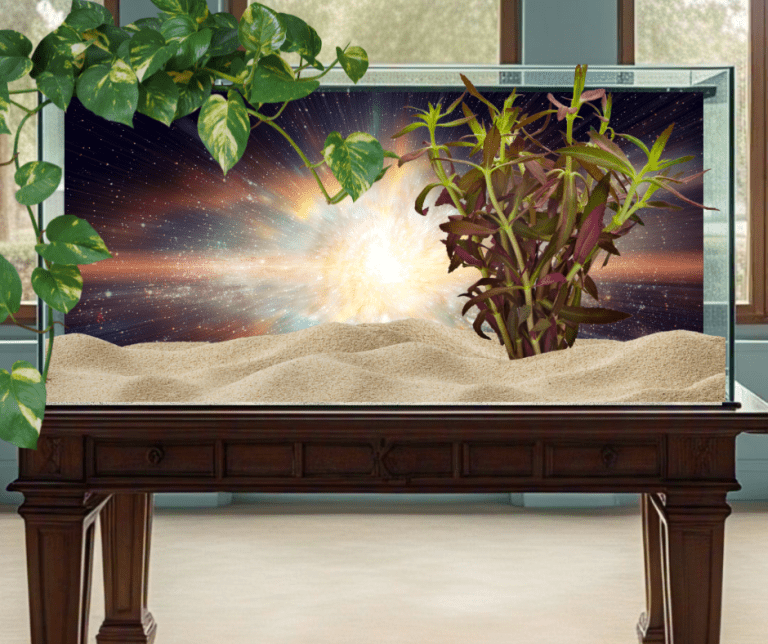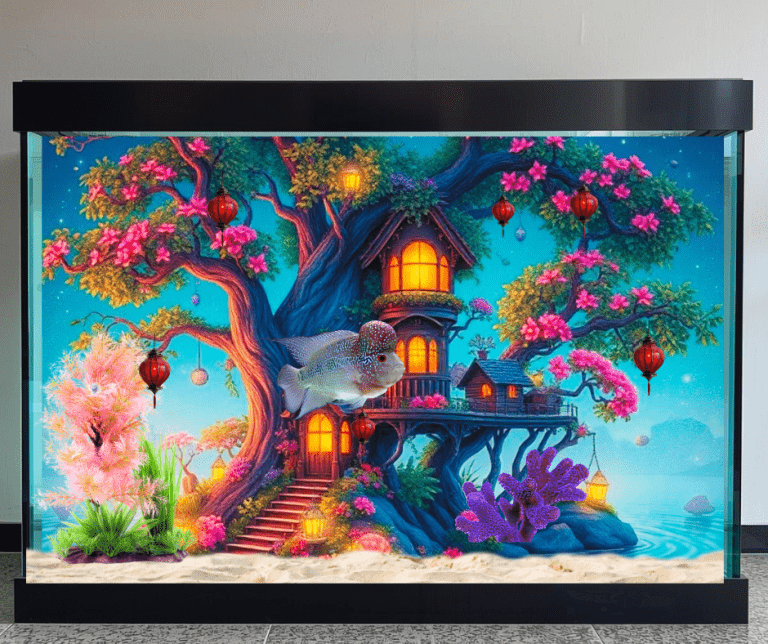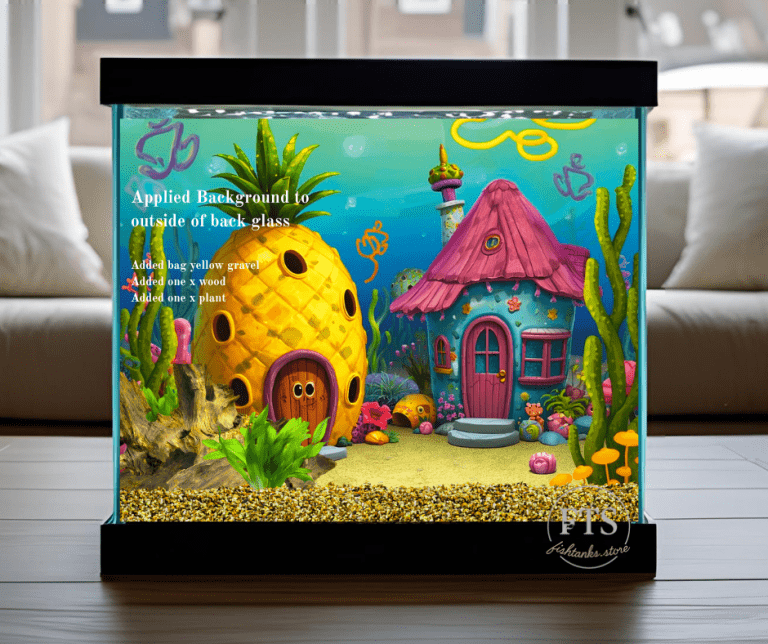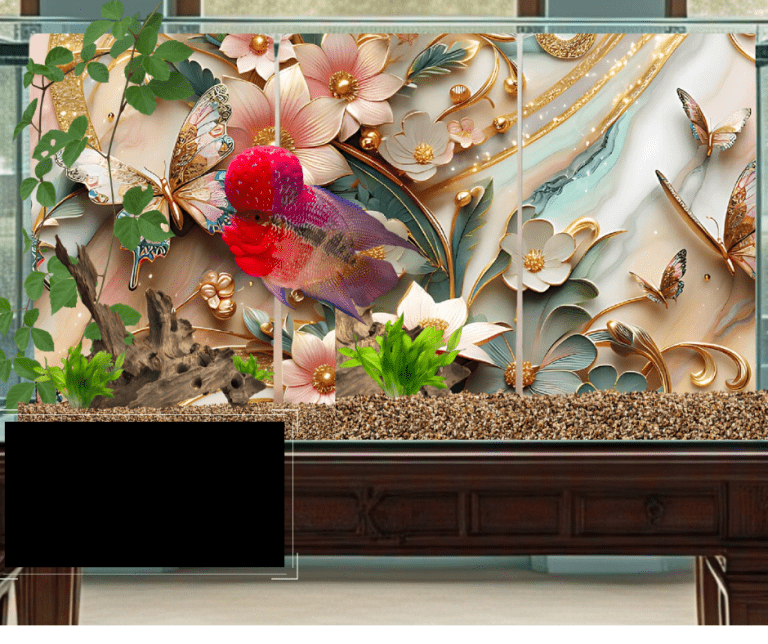Subscribe For $10 Off 1st Background
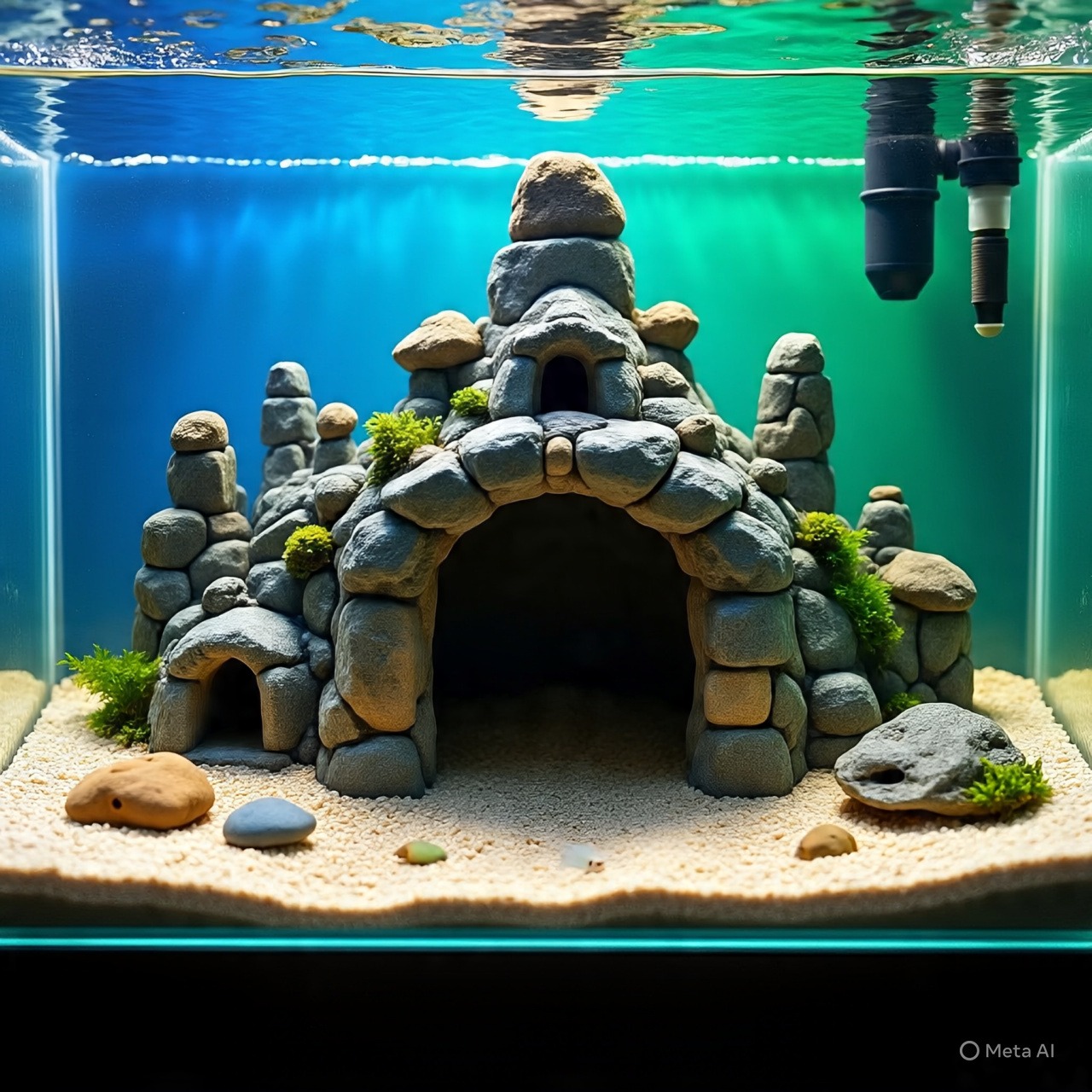
Rock Cave Aquarium: The Ultimate Guide to Creating a Stunning Natural Habitat for Your Fish
A few weeks back, I decided to build my own Rock Cave Aquarium. I have a little disabled goldfish named princess. For the past 3 years, she has been unable to swim. When she once swam, she loved to hide under a little bridge in her fish tank, so I decided her bare bottom tank was due for an upgrade, and i’d go with a rock cave fish tank.
Before I started my fish tank cave project, I needed to find out exactly: About the items listed in the table of contents. I will update this post with a video tutorial on creating the perfect aquarium rock cave soon.
Rock Cave Aquarium: The perfect fish hideaway!
Building a rock cave aquarium transforms your fish tank into a vibrant underwater world that mimics nature. These aquariums are more than just pretty tanks—they provide fish with safe hiding spots, reduce stress, and promote healthier living environments. If you’re ready to turn your fish tank into a mesmerizing natural habitat, this guide will help you with setup tips, design ideas, maintenance, and expert insights, all in one place.
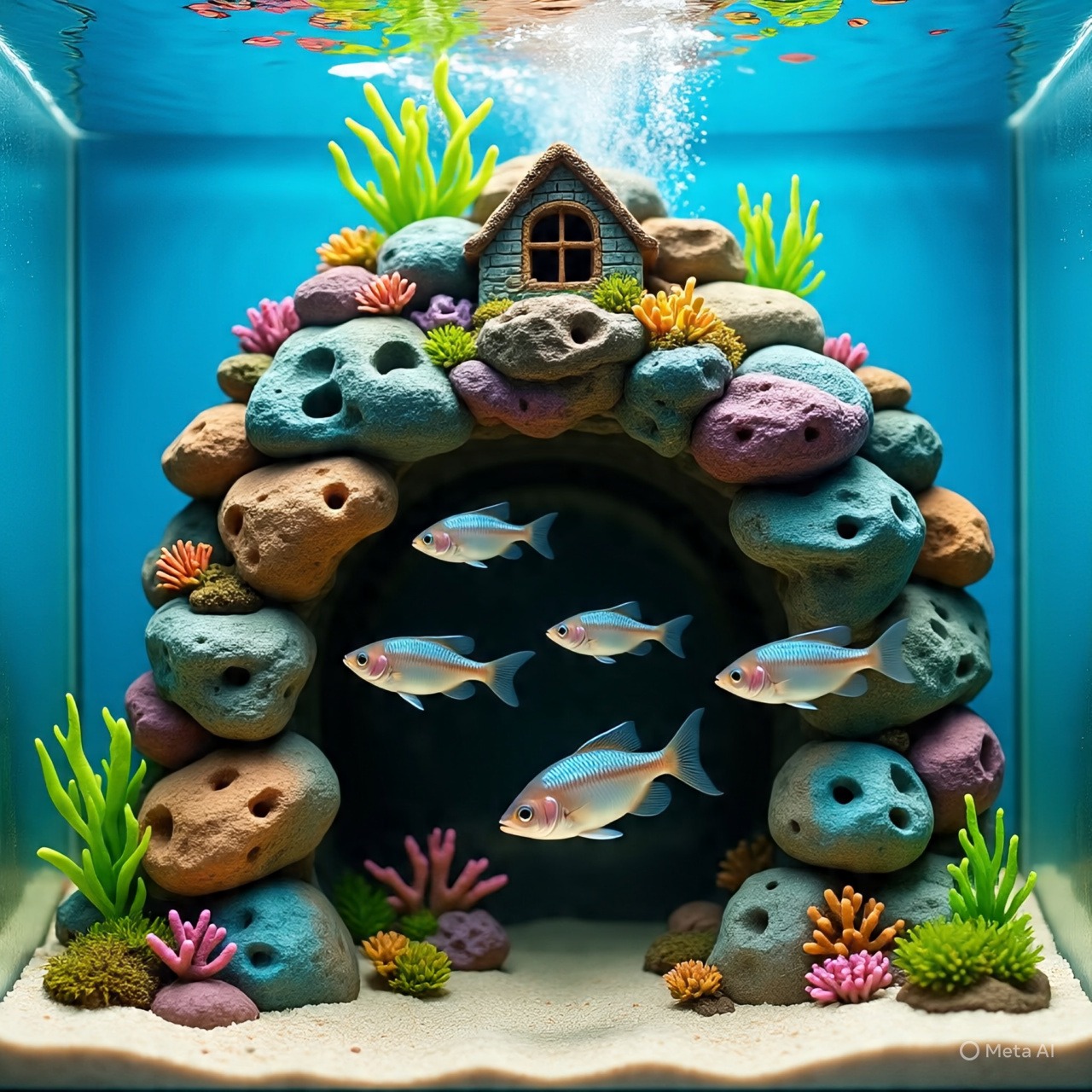
Understanding the Concept of a Rock Cave Aquarium
Building a rock cave aquarium transforms your fish tank into a vibrant underwater world that mimics nature. These aquariums are more than just pretty tanks—they provide fish with safe hiding spots, reduce stress, and promote healthier living environments. If you’re ready to turn your fish tank into a mesmerizing natural habitat, this guide will help you with setup tips, design ideas, maintenance, and expert insights, all in one place.
What Is a Rock Cave Aquarium?
A rock cave aquarium features natural or artificial rocks arranged to form caves, crevices, and overhangs. These structures imitate real-life environments found in caves, reef systems, and riverbeds. Unlike standard tanks with open spaces, rock cave aquariums focus on creating a natural setting that offers shelter for fish and adds visual interest.
The main idea? Create a lively, natural-looking environment that encourages fish to behave naturally while adding a stunning focal point for viewers. Fish such as cichlids, catfish, or gobies especially love having shady places to hide and rest.
Types of Rocks Suitable for Aquariums
Choosing the right rocks makes all the difference. Natural rocks like Seiryu, Dragonstone, and limestone are popular because they add authentic textures and colors. Artificial rocks are also available and can be designed to look just as real. What’s crucial is selecting safe, non-toxic options that won’t leach harmful minerals into your tank water.
Some rocks, especially limestone, can alter water chemistry—raising pH or softening water—so testing before placing them inside your tank is a smart move. Always avoid rocks containing chemicals, paint, or other residues that could harm your fish.
Natural Ecosystems and Aquarium Design
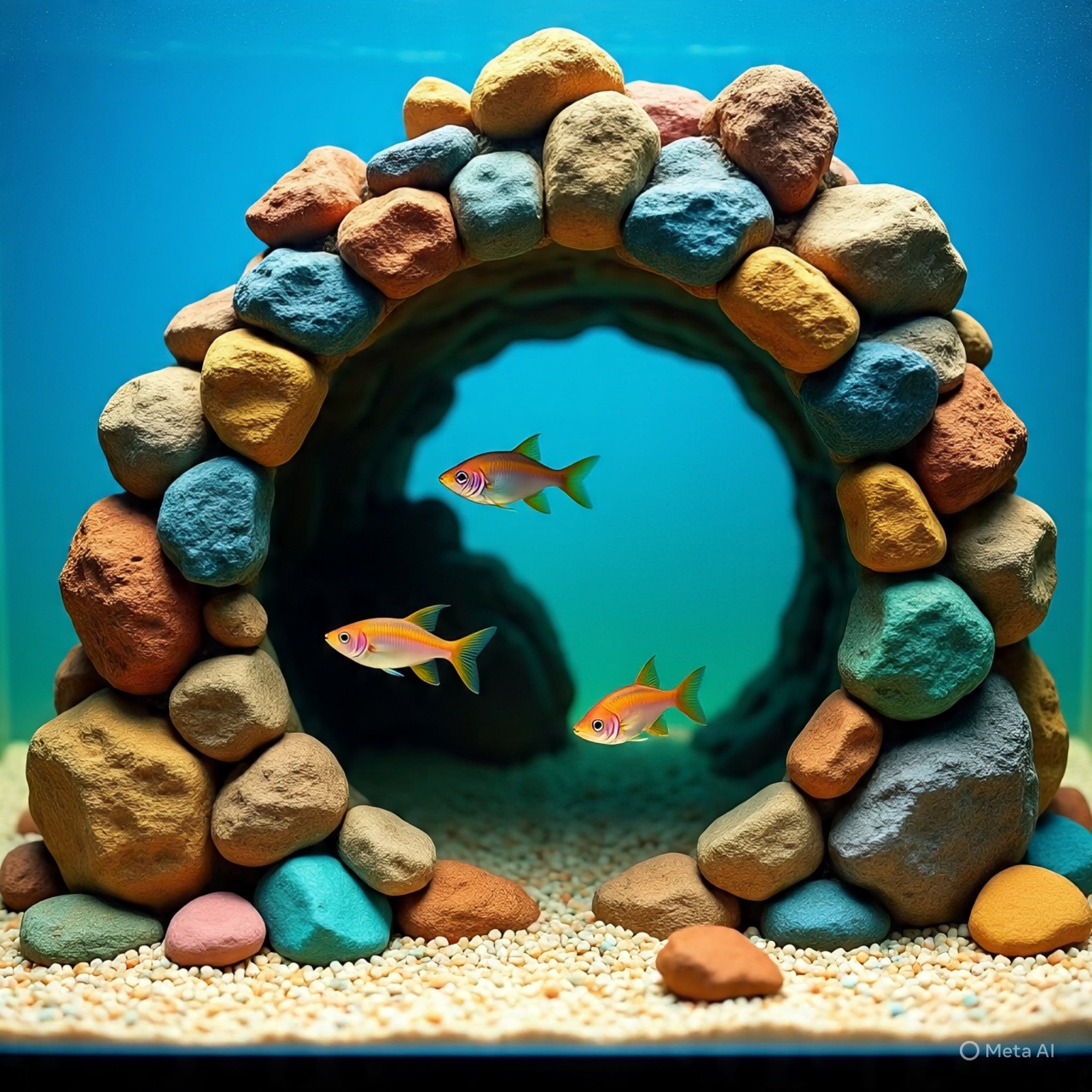
A rock cave setup mimics ecosystems such as caves, coral reefs, and riverbeds. Think about it: fish naturally seek shelter in rocky formations, and recreating these habitats encourages natural behaviors like hiding, breeding, and exploring.
For freshwater lovers, cichlid tanks thrive with rocky landscapes that resemble their native environments. Saltwater reefs benefit from coral-like rocks, creating a lively, colorful habitat. Whether you have large community tanks or species-specific setups, rock formations can improve fish health and reduce stress.
Planning Your Rock Cave Aquarium
Designing Your Layout
Designing a stunning rock cave aquarium begins with planning. Visualize caves, narrow crevices, and overhangs that both look beautiful and serve as hiding spots. Mix large rocks with smaller stones to craft natural-looking formations.
Balance is key. Place caves strategically so fish can swim freely between open areas and hideouts. For example, you might position a central cave as a focal point or layer rocks in tiers to mimic natural terrain. Remember, varied heights and depths create depth and visual appeal.

Selecting the Right Size and Scale
Before starting, think about the fish inside. Different species need different amounts of space. For larger, territorial fish, a bigger tank with ample room for caves is a must. Smaller or shy fish need enough hiding spots to feel safe.
Your rock structures should be stable—no one wants a cave collapsing. Make sure rocks are securely stacked, especially if your tank has strong water flow or feeding activity. Proper size and placement make a safer environment and keep your fish happy.
Tools and Materials Needed
To build a perfect rock cave aquarium, gather:
- Natural or artificial rocks
- Aquarium-safe adhesive or epoxy
- Gravel or substrate
- Plastic bags or buckets for soaking rocks
- Garden gloves for handling rough stones
- Basic tools: chisel or hammer (for shaping rocks)
- Preparing the rocks: cleaning
Quality matters. Use durable, non-toxic adhesives designed for aquarium use to keep structures stable. Follow manufacturer instructions, and plan your layout before fixing everything in place.
Building Your Rock Cave Aquarium
Preparing Your Rocks
Start by thoroughly cleaning your rocks. Scrub off dirt and debris with a brush under running water. Avoid soap or chemicals. Soak natural rocks in water for days to leach out unwanted minerals. Test for pH changes after soaking—if the water remains stable, your rocks are safe.
You can carve or chip rocks to fit your design better. Creating larger caves or overhangs might involve stacking or shaping rocks with a chisel. The goal is natural-looking, secure formations that match your envisioned layout.
Assembling the Rock Structures
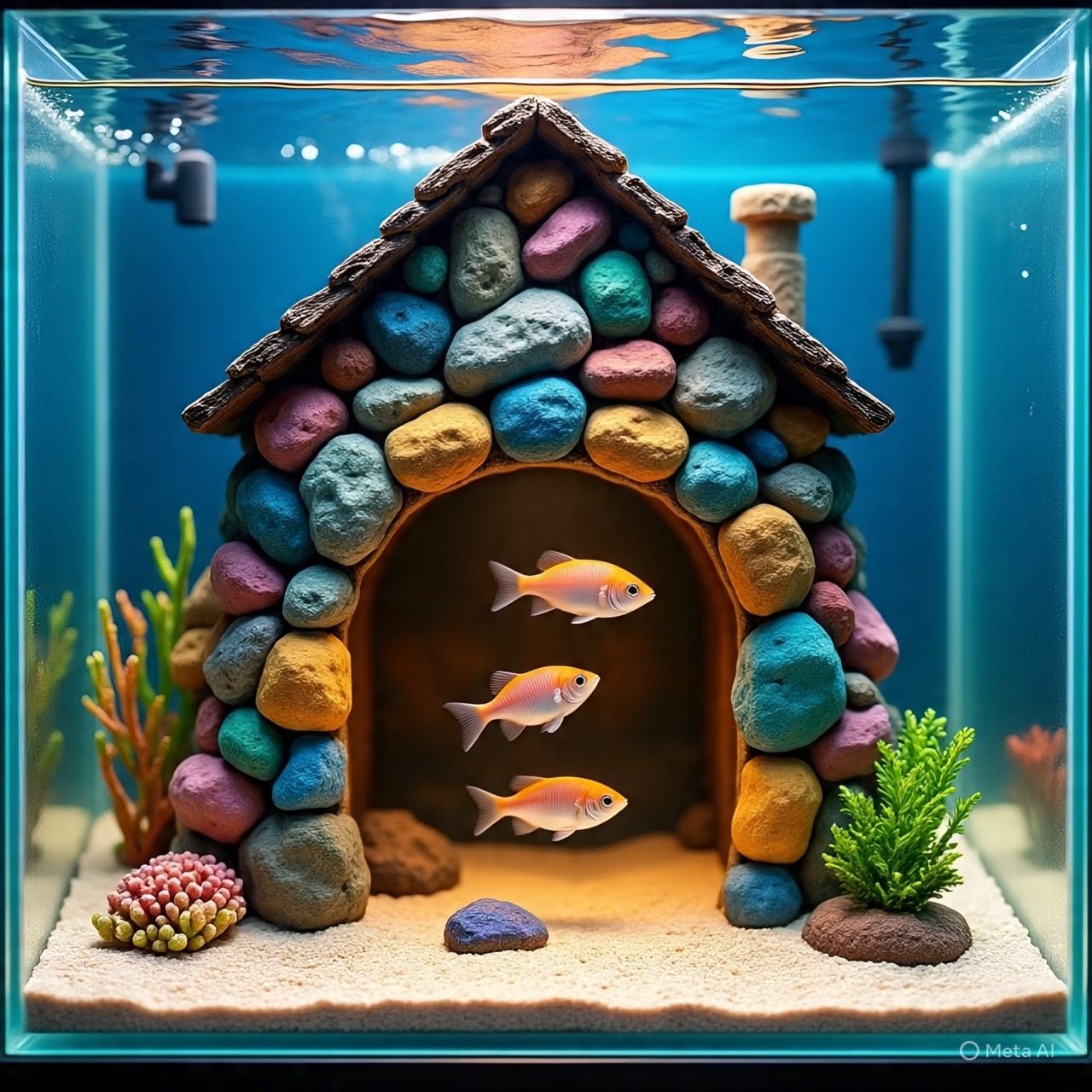
Stack rocks carefully, starting with sturdy bases. Use aquarium-safe adhesives to secure unstable or top-heavy sections. Apply glue between contact points, then hold until set. For added stability, consider sealing tricky joints with epoxy.
Natural formations often look best when asymmetrical. Don’t be afraid to experiment with shapes—aim for realistic, irregular patterns that mimic nature’s randomness.
Installing the Environment
Once your rocks are in place, add substrate like sand or gravel around the base. Plant aquatic plants in gaps or attach them to rocks for more realism. Set up your filtration system, lighting, and heater if needed.
Then, cycle your tank. This means establishing beneficial bacteria that break down fish waste. It takes a few weeks but ensures a safe, healthy environment before adding your fish.
Maintenance and Care of a Rock Cave Aquarium
Routine Cleaning and Inspection
Regularly remove debris and algae from rocks and glass. Use a soft brush or scraper for stubborn algae. Inspect your rock structures for stability—are they wobbling or loose? Ensure no sharp edges exposed to damage fish.
Test water conditions weekly—watch for ammonia, nitrite, nitrate, and pH levels. Keeping these parameters stable helps fish thrive in their rocky homes. If by chance your water turns cloudy be sure to read this post next. We also have a cloudy water, and general maintenance schedule, you can download and use.
Ensuring Habitat Stability
Dislodge or unstable rocks can cause injuries or stress. If you notice shifting or wobbling, reinforce or reposition them. Maintain water flow for oxygen and to prevent buildup of waste behind caves.
Avoid overgrowth of algae or biofilm, which can smother plants or make caves look unappealing. Regular cleaning and water changes keep your setup pristine.
Enhancing Natural Behavior and Fish Health
Provide enough hiding spots so fish feel safe. Keep compatible species together—shy fish and territorial ones often benefit from caves. If breeding, caves give fish a quiet place to lay eggs and protect fry.
Properly maintained caves encourage natural movement and reduce aggression, making your fish happier and healthier.
Expert Tips and Common Pitfalls to Avoid
Professionals recommend securing all rocks properly to prevent collapse. Never use rocks from outside sources without testing their safety.
Avoid over-tiling or overcrowding tanks. Ample space and escape routes keep fish stress-free. Make sure water flow isn’t obstructed by your formations, and provide lighting that highlights the natural look without disturbing your fish.
Other Questions About Rock Cave Aquariums
Conclusion
A rock cave aquarium isn’t just beautiful—it’s a functional ecosystem that deeply benefits your fish. The right choice of rocks and thoughtful design create a natural escape and a lively centerpiece. Regular maintenance, proper materials, and careful planning are key to safety and success.
Let your creativity flow, and don’t be afraid to experiment with different structures and layouts. With patience and care, you’ll craft a stunning underwater landscape that you and your fish will enjoy for years to come. Start building your dream aquarium today and watch your aquatic habitat come to life!
Frequently Asked Questions (FAQs)
Find answers to the most common questions about Rock Cave Fish Tanks. If you can’t find what you’re looking for here, please contact us.
Our standard hours of operation are Monday to Friday, 9:00 AM to 5:00 PM in Pacific Standard Time (PST).

